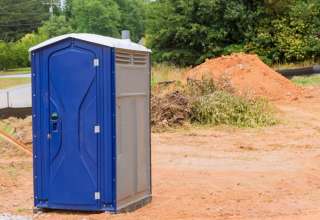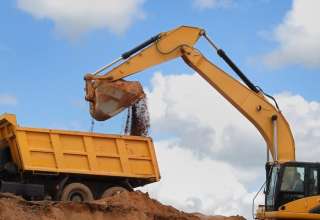
Drug screening in the workplace continues to be a hot topic. Do these things work? Do they have a legal basis? Do organizations have moral obligations to conduct this procedure? Opinions are pretty subjective, but instead of focusing on these opinions, let us take a closer look at some facts when it comes to drug testing.
There is a drastic increase in failed drug testing
According to diagnostic agencies, there are at least 30% failed illegal substance screens in the warehousing and transportation industry. A dramatic increase was recorded between 2015 and 2018. Other sectors that saw a sudden increase in failed tests include the construction industry (13%) and the wholesale industry (20%).
It is no coincidence that the industries mentioned above have their fair share of safety-sensitive jobs. These jobs follow stringent screening guidelines. But alcohol or drugs can impair the performance of workers regardless of job type or industry. Working under the influence of illicit drugs can place workers, their co-workers, as well as the general public at significant risk. This risk can have grave consequences.
To know more about safety-sensitive jobs, click here for more info.
Workplace drug misuse can cost organizations and their employees
According to NIDA or the National Institute on Drug Abuse, substance use and misuse costs organizations more or less $700 billion annually in health care expenses, crime-related expenses, and lost workers’ productivity. Workers with these problems are more likely to be involved in work-area accidents.
As a matter of fact, the use and abuse of alcohol or illicit substances have been responsible for the exponential increase in workplace deaths. According to the latest Bureau of Labor Statistics studies, accidental overdoses from alcohol or illegal use of prescription drugs and illicit substances while at work dramatically increased by at least 12% from 2017 to 2018.
The number of work-area fatalities has increased regularly year by year for the past six years. While the impact of this problem at work can be pretty devastating financially, let us not overlook its psychological and emotional ramifications. Workers’ morale can take a dip when a worker gets hurt or injured on the job. We can only imagine workers’ confidence following a fatality in their workplace, especially if the cause of death is tied to the use and abuse of illicit substances.
Whether the staff suffers from prescription medication addiction or alcohol misuse, consequent work area injuries or fatalities can have short- or long-term effects that can go far beyond an organization’s bottom line. A program in the workplace can’t guarantee an organization will have an illicit substance-free environment. But not having a strict program in place can leave them, as well as their staff, at greater risk.
The benefits of drug screening in the workplace
Before looking at the benefits of illicit substance testing at work, let us address the common misconception that these things are more about invading people’s privacy or rights – policing instead of protecting. This process is not a law-enforcement initiative. It is simply a program designed to help deter illicit drug abuse.
Through deterrence, companies can take in secondary benefits like minimizing workplace injuries, as well as related health care costs and minimizing lost productivity and absenteeism. Even from the point of view of company hiring, companies can help minimize risks associated with drug abuse in the workplace by screening all the applicants for illegal drugs.
Applicants who use illegal substances or alcohol may reconsider applying. A lot of organizations require new employees to pass screens as a condition for accepting job offers. This kind of testing is also known as a pre-employment screen.
Visit https://www.impactlaw.com/personal-injury/workplace to find out more about workplace injuries.
Testing scenarios
There are a couple of reasons to test employees for alcohol and substance abuse. A lot of organizations to conduct these programs to help maintain safe work areas, while some firms need to conduct them for state and federal regulatory compliance. There are common scenarios for substance testing workers. Pre-employment has already been mentioned above. Listed below is some information on the other five scenarios.
Reasonable cause or suspicion
If a worker’s appearance, speech, behavior, or smell causes the organization to suspect alcohol or illicit substance abuse, workers may be subjected to these screenings.
Random screens
Random tests help organizations encourage their workers to remain alcohol or drug-free throughout their working life. These programs need to use a random selection process where employees can get selected for testing. Some of these programs even include small windows to complete the test.
Post-accident screening
If workplace accidents are possibly the result of alcohol or substance use, the company can require a screening. Organizations need to keep in mind that per OSHA (Occupational Safety and Health Administration) post-accident screening provisions, testing can only be required if there’s a reasonable suspicion that the use of illegal substances was a significant factor. For workers regulated by different federal agencies like the Department of Transportation or Nationwide Testing Association, there is a particular regulation detailing when these tests are required.
Return-to-duty screening
An RTD or Return-to-Duty test is conducted with employees who tested positive for illegal drugs or violate an organization’s drug use and abuse policy. These workers need to pass a screening before returning to work in their assigned task. Return-to-duty screening guidelines differ for the non-regulated and regulated workforce.
Follow-up tests
A worker may be tested regularly upon completing the return-to-duty process. This process may be administered in addition to random screens on an unannounced basis more or less six times in the first twelve months following return-to-duty screens.
Establishing programs for illicit substance tests at work
Why does screening in the workplace very important? As studies show, the effects of alcohol and substance abuse are pretty costly to workers. A lot of organizations question whether the abuse of drugs is the real problem for them. Still, when the NCADD reports that at least 70% of people abusing alcohol and illicit substances are employed, it is pretty hard not to view it as a workplace problem.
The steps needed to establish a program usually differ by the organization, as they have different needs and requirements based on their industry, as well as any applicable government regulations. Once a detailed and written policy has been designed, it needs to be distributed to the entire organization.

























